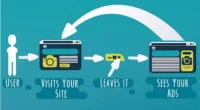Online marketing is changing fast, and businesses need to keep up as we move into 2025. It’s not just about being online anymore; it’s about doing it smartly. From using AI to creating engaging videos, the strategies are getting more advanced. But don’t worry, it’s not all rocket science. With the right tools and creativity, you can make your online marketing efforts pay off. Let’s dive into some key strategies that can help you succeed in the digital world of 2025.
Key Takeaways
- AI is transforming how we personalize content and interact with customers.
- Social media strategies need to be tailored to each platform for better engagement.
- Video marketing, especially short-form and live streaming, is crucial for capturing attention.
- Mobile optimization is no longer optional; it’s a must for reaching your audience.
- Collaborating with influencers can significantly boost your brand’s credibility and reach.
Harnessing the Power of Artificial Intelligence in Online Marketing
AI-Driven Personalization Techniques
In 2025, businesses are turning to AI to create personalized experiences for their customers. AI-driven personalization is not just about using customer names in emails anymore. It’s about understanding individual preferences and behaviors to offer tailored recommendations, content, and even pricing. Imagine walking into a store where every product seems handpicked just for you. That’s the kind of experience AI strives to deliver online.
Automating Customer Interactions with AI
AI is like having a tireless assistant that never sleeps. Chatbots and virtual assistants are now handling customer queries around the clock. They provide instant responses, guide users through purchasing decisions, and even troubleshoot issues. This automation doesn’t just save time; it also makes customers feel valued and heard. AI’s ability to learn from interactions means it gets better at understanding and responding to customer needs over time.
Predictive Analytics for Market Trends
Predictive analytics is like having a crystal ball for your business. By analyzing past data, AI can forecast future trends and consumer behaviors. This insight allows businesses to stay one step ahead, adapting their strategies to meet upcoming demands. Whether it’s predicting the next big product or understanding seasonal buying patterns, AI’s predictive power is a game changer for marketers.
By harnessing AI’s capabilities, businesses can boost efficiency, refine targeting, and enhance customer engagement. This proactive stance opens up new opportunities for growth and innovation in digital marketing.
Mastering Social Media for Enhanced Brand Engagement
Platform-Specific Strategies for Social Media
In 2025, understanding the unique characteristics of each social media platform is key. Tailoring your strategy to fit these nuances can make a huge difference. For example, Instagram Reels might be perfect for visual storytelling, while LinkedIn could be your go-to for professional networking. Consider the audience and the type of content that thrives on each platform. This approach not only boosts visibility but also enhances engagement by delivering content that resonates with the platform’s users.
Engagement Techniques to Boost Interaction
Engagement is more than just likes and shares. It’s about creating meaningful interactions. Try using polls, Q&A sessions, or live streams to connect with your audience. These tools invite participation and can turn passive viewers into active participants. Another effective technique is to incorporate shoppable posts which can seamlessly turn engagement into sales. By making it easy for users to purchase directly from their feeds, you can shorten the sales funnel and enhance user experience.
Leveraging User-Generated Content
User-generated content (UGC) is a powerful way to build community and trust. Encourage your audience to share their experiences with your brand. This not only creates authentic content but also fosters a sense of belonging among your followers. Highlighting UGC on your platforms can enhance credibility and show your brand’s human side. Additionally, it provides fresh content without the constant need for creation on your part. Remember, the more your audience feels involved, the stronger your brand loyalty will become.
Engaging with your audience on social media is about more than just broadcasting your message; it’s about creating a dialogue and making your followers feel heard and valued.
For more actionable tips on enhancing your social media strategy, check out our guide on enhancing your social media strategy for 2025.
The Role of Video Marketing in Capturing Audience Attention
Creating Compelling Video Narratives
In 2025, video marketing will be a leading force in the digital realm. When it comes to crafting compelling video narratives, storytelling is key. Videos that tell a story can connect emotionally with viewers, making them more memorable. Whether it’s a brand’s origin story or a customer testimonial, the narrative should be engaging and authentic. A well-told story can turn a simple product video into a powerful marketing tool.
Utilizing Short-Form Videos for Impact
Short-form videos are all the rage, thanks to platforms like TikTok and Instagram Reels. These bite-sized clips are perfect for capturing attention quickly. They allow brands to deliver messages concisely and entertainingly. Short-form videos are not only easy to consume but also highly shareable, which can help amplify your reach. They’re great for showcasing quick tips, product highlights, or behind-the-scenes glimpses.
Live Streaming as a Marketing Tool
Live streaming offers a unique way to interact with your audience in real-time. It’s an opportunity to showcase products, host Q&A sessions, or provide live tutorials. The immediacy of live streaming creates a sense of urgency and excitement. Plus, it’s a chance to gather instant feedback from viewers. To make the most of live streaming, ensure you have a stable internet connection and engage actively with your audience throughout the session.
Optimizing for Mobile: A Necessity in 2025
Mobile-First Design Principles
In 2025, mobile-first design isn’t just a buzzword—it’s a must. As more people rely on their phones, websites need to look good and work well on small screens. This means starting with the mobile version of your site and then expanding to larger screens. A clean, simple design with easy navigation is key. If users can’t find what they’re looking for quickly, they’ll move on.
Enhancing User Experience on Mobile
User experience on mobile is all about speed and ease. Pages should load fast, and buttons need to be big enough to tap without effort. Think about how people use their phones—often with one hand. Make sure everything is within easy reach. Also, consider the context; mobile users might be on the go, so keep the important stuff upfront and accessible.
Mobile-Specific Content Strategies
Creating content for mobile users means getting to the point quickly. Use short paragraphs and bullet points to break up text. Videos and images should load fast and look good on small screens. And don’t forget about voice search—more people are using it, so make sure your content is ready to be found that way. Keep your message clear and direct, and always think about what your audience needs when they’re on their phones.
Building Brand Reputation Through Influencer Collaborations
Selecting the Right Influencers for Your Brand
Finding the perfect influencer for your brand isn’t just about follower count. It’s about alignment. You want someone whose values and style match your brand’s vibe. Think about it: if you’re a sustainable clothing line, an influencer who promotes fast fashion might not be your best bet. Look for those who have a genuine connection with their audience. Micro-influencers, with their smaller but dedicated followings, often bring more authenticity to the table.
Measuring the Impact of Influencer Campaigns
Once you’ve teamed up with an influencer, the next step is to see how it’s working out. Tracking the performance of these campaigns is crucial. Use unique discount codes or affiliate links to see which influencer is bringing in the sales. Don’t forget to check engagement metrics like likes, comments, and shares. These numbers will give you a clear picture of what’s working and what needs tweaking.
Co-Creating Content with Influencers
Collaborating with influencers doesn’t mean handing them a script. Instead, work together to create content that feels genuine. Let them put their spin on your message. This kind of co-creation not only boosts authenticity but also taps into the influencer’s creativity. Remember, they know their audience best, so trust their instincts. This partnership can lead to content that’s both engaging and effective.
Data-Driven Marketing: Making Informed Decisions

In 2025, data-driven marketing is the backbone of effective marketing strategies. Understanding your customers through data analysis allows businesses to create more impactful campaigns. It’s not just about crunching numbers; it’s about gaining insights into customer behavior and preferences.
Utilizing Analytics for Campaign Optimization
Analytics tools like Google Analytics 4 and Adobe Analytics are essential for tracking performance metrics and understanding user behavior. By analyzing these metrics, businesses can identify growth opportunities and optimize their campaigns accordingly. Here are some key steps:
- Set clear Key Performance Indicators (KPIs) such as conversion rates and customer retention.
- Use heatmaps to visualize user interactions and improve user experience.
- Continuously refine strategies based on data insights.
Segmentation and Targeting for Better Results
Segmentation is crucial in delivering personalized marketing experiences. By dividing your audience into specific segments, you can tailor your campaigns to meet their unique needs. This approach enhances relevance and boosts engagement. Consider these methods:
- Use CRM systems like Salesforce to track customer journeys and preferences.
- Implement predictive analytics to anticipate trends and customer needs.
- Personalize campaigns to foster loyalty and improve ROI.
Aligning Marketing Goals with Data Insights
Aligning your marketing goals with data insights ensures that your strategies are effective and targeted. By using real-time data, you can adapt your campaigns to market shifts and consumer behaviors. This alignment helps in making informed decisions that lead to better outcomes.
In the fast-paced world of marketing, data is your compass. It guides you through the complexities of consumer behavior, helping you make decisions that resonate with your audience.
For more insights into effective data-driven marketing strategies, explore essential tools and strategies for enhancing ROI and maintaining a competitive edge.
Personalizing Content to Enhance Customer Experience
Dynamic Content Delivery
In today’s fast-paced digital world, people want to feel like they’re being spoken to directly. Dynamic content delivery does just that. It changes based on who’s viewing it, making sure the right message gets to the right person at the right time. Imagine browsing a website and seeing content that seems tailor-made for you. That’s the magic of dynamic content. It uses data like your past behavior, location, and preferences to serve up personalized experiences. This isn’t just a fancy trick; it’s a game-changer for keeping visitors engaged and coming back for more.
Audience Segmentation Techniques
Audience segmentation is like dividing a pizza into slices, each one catering to a different taste. By breaking down your audience into smaller groups based on things like age, interests, or buying habits, you can craft messages that hit home. Here’s how you can do it:
- Demographic Segmentation: Focuses on age, gender, income, etc.
- Behavioral Segmentation: Looks at purchasing behavior and usage.
- Psychographic Segmentation: Considers lifestyle and personality traits.
These techniques help you understand your audience better and make sure your marketing efforts are not just a shot in the dark.
Interactive Features for User Engagement
Interactive features are like the sprinkles on your marketing cupcake. They make your content not just something to read or watch, but something to do. Quizzes, polls, and interactive videos keep people clicking and engaged. They’re not just fun; they provide valuable insights into what your audience likes and wants. Plus, they can make your content more shareable, helping to spread your message far and wide.
Personalization isn’t just a trend; it’s becoming the norm. By making your content feel personal and engaging, you’re not just marketing a product—you’re building a relationship. This connection can lead to increased loyalty and, ultimately, success.
Email Automation: Streamlining Communication

Crafting Effective Automated Email Campaigns
In 2025, email automation is not just about sending emails. It’s about creating a seamless communication flow that keeps your audience engaged. Start by developing a series of emails that guide your leads through the sales funnel. These automated campaigns, often called drip campaigns, can educate your audience, share product updates, or offer special promotions. A well-crafted email campaign is like a good story—it has a beginning, middle, and end, keeping readers hooked from the first sentence.
Segmentation for Personalized Messaging
Segmentation is the backbone of any successful email marketing strategy. By dividing your email list into smaller groups based on demographics, interests, or past behaviors, you can send more relevant content to each segment. This not only improves open rates but also boosts engagement. Imagine receiving an email that speaks directly to your needs or interests—it’s far more impactful than a generic message. Use automation tools to streamline this process, making it easy to manage even the most complex segmentation strategies.
Analyzing Email Performance Metrics
To truly understand the effectiveness of your email campaigns, you need to dive into the data. Key metrics like open rates, click-through rates, and conversion rates tell you how your emails are performing and where there’s room for improvement. By regularly analyzing these metrics, you can tweak your campaigns for better results. For instance, if you notice a low open rate, it might be time to experiment with different subject lines or sending times. Remember, continual improvement is the name of the game in email marketing.
Email automation is more than just a tool—it’s a strategy that, when executed well, can transform how you connect with your audience. It allows for consistent engagement and builds relationships that are both meaningful and measurable.
Conclusion
As we look ahead to 2025, it’s clear that online marketing is set to become even more dynamic and essential for businesses aiming to succeed. The strategies we’ve explored, from embracing AI to mastering social media, are not just trends—they’re the new standards. Businesses that adapt and innovate will find themselves not just surviving, but thriving in this ever-evolving digital landscape. It’s all about staying flexible, keeping an eye on the latest developments, and being ready to pivot when necessary. So, whether you’re a small startup or a large corporation, the key to unlocking success in 2025 lies in your ability to embrace change and leverage these innovative strategies to connect with your audience in meaningful ways. Let’s gear up for a future where digital marketing isn’t just a tool, but a driving force behind business growth.
Frequently Asked Questions
What role does AI play in online marketing?
AI helps personalize ads and content, making them more relevant to each user. It also automates customer support through chatbots and predicts market trends.
How can social media boost brand engagement?
By using strategies tailored to each platform, like Instagram Reels for storytelling, and engaging with users through polls and live streams, brands can connect better with their audience.
Why is video marketing important?
Videos capture attention quickly and can tell a brand’s story in an engaging way. Short videos and live streams are especially effective for reaching audiences.
What does optimizing for mobile mean?
It means designing websites and content that work well on smartphones, ensuring fast load times and easy navigation to improve user experience.
How do influencers help build brand reputation?
Influencers can introduce your brand to their followers, providing credibility and reaching new audiences. Choosing the right influencers is key to success.
Why is data-driven marketing important?
Using data helps marketers understand what works and what doesn’t, allowing them to make better decisions and improve their campaigns.





